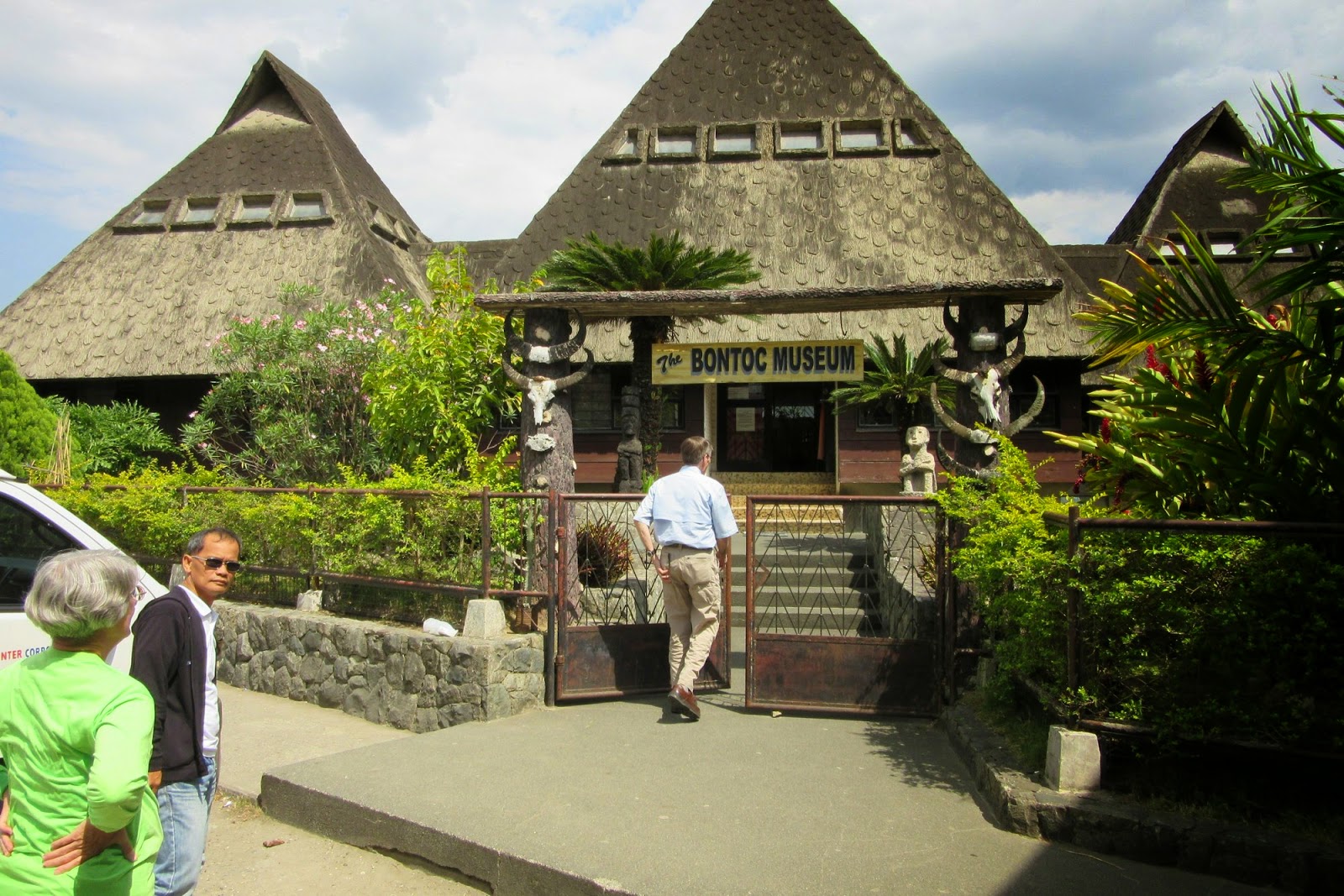A place Mike's father does not mention, but was "in the neighborhood," so to speak, is Banaue (rhymes with wowie), famous for its ancient rice terraces, which we will cover in detail in our next blog. The road from Baguio to Banaue is in the mountains, with constantly winding roads; the travel is slow but you don't mind because the scenery is often breathtaking. We hope you enjoy our photos.
This is the view as we left the crowded city of Baguio, "City of Pines." Not being city folks ourselves, we were really looking forward to heading into the boondocks.
Baguio, being a mile high, is the perfect place to grow many fruits, vegetables, and flowers, which arrive fresh daily in Metro Manila. One of our favorite vegetables is known as "Baguio beans." Strawberries also thrive here.
We didn't have to travel too far to get to the highest point in the Philippine highway system. As you can see, it is 7,400 feet above sea level. Why this is not given in meters, the national measure (2,255 meters), we don't have a clue. Maybe it was established by the Americans 100 years ago and nobody bothered to work out the conversion. Or maybe 7,400 sounds higher than 2,255.
Here's Marcia enjoying the view down the valley. Notice she's not in shorts and t-shirt, our usual dress in the Philippines.
We didn't have to travel too far to get to the highest point in the Philippine highway system. As you can see, it is 7,400 feet above sea level. Why this is not given in meters, the national measure (2,255 meters), we don't have a clue. Maybe it was established by the Americans 100 years ago and nobody bothered to work out the conversion. Or maybe 7,400 sounds higher than 2,255.
Here's Marcia enjoying the view down the valley. Notice she's not in shorts and t-shirt, our usual dress in the Philippines.
One of those valley views
Here's a preview of a smaller terraced mountainside, taken at full telephoto across the valley
The saleslady at a store at the high-point stop
The air pressure is so much less at this altitude that all air-tight packages look like they are about to burst. There's no question that this bag of chips is air-tight.
More terraced fields on the way to Banaue. Most so far appear to be vegetables, not rice.
This rock wall is one of hundreds we would see in the next few days. The builders painstakingly fit them together. In some cases they use cement on top, sometimes on the sides as well, but often you see walls that are just well-fitted rocks.
Some dry terraces in the foreground
We're pretty sure these are orchids. Feel free to set us straight. Pretty, aren't they?
A mostly dry river bed runs by this small town in the mountains. Rainy season will change that.
What we're told is one of the newer bridges on the road
And now on the other side of the bridge, about a half hour from Bontoc
Mike about to enter the Bontoc Museum. Bondoc is the Tagalog word for mountain, but we're in Igorot (EE-go-roat) territory now. By the way, the word boondocks, meaning "out in the sticks," comes from the Tagalog. In this case, we were "down in the boondocks," since Bontoc is in the valley, not on top of a mountain as the name might imply. You can see that Marcia has shed her sweatshirt. Our driver, Mario, doing his Secret Service impression, is also on the left. Later Mario commented how tired his forearms and shoulders got from nine straight hours of mountain driving.
Carabao (water buffalo) skulls outside the museum. It was a very nice, small but well presented museum, but they don't allow pictures inside so we can't share any with you.
Out back there is an Igorot village display. In the rice terraces the next day we saw that many of the Ifugao (EE-fu-gow) people still reside in these types of homes. Igorot and Ifugao are the indigenous tribes of this mountain region.
A look up the valley as we leave Bontoc
On the road to Banaue we encountered what appeared to be landslide after landslide. Workers were filling trucks with the rocks from the slides. The couple with the motorcycle were from the Ukraine. This area attracts tourists from all over the world.
Another slide, more workers, more delays
This shot was taken a while later, after we had driven around the valley; we could now see the rock slides that we had driven past. The next day when we commented about this to our local guide he put us straight: these "rock slides" are actually man made. The rocks are collected specifically to create all the rock walls that we talked about earlier. Makes sense in a way, but does seem strange to continually block the road to collect rocks.
The underside of one of the local "fern trees"
Here's one of the rice terraces as we approached Banaue
Natives in local Ifugao dress at the scenic overview
We're on the outskirts of Banaue now, and this is the first truly spectacular rice terrace we've encountered.
Now we're in Banaue and this terrace is even more impressive
Young men working the terrace
Rice seedlings, which will be transplanted
A view of the side of the same terrace
As we spotted the steep stairs, we wondered, is that anything like what we'll be climbing tomorrow?
"Mr. Michael Duncan & Party" are welcomed to the Banaue Hotel
Be with us next time, when we bring you our exciting adventure in the Batad Rice Terraces!
Steve and Marcia on the Rock

































Beautiful images of baguio city.It is awesome nature of baguio city.thanks for sharing this images.
ReplyDeletevacation house in baguio